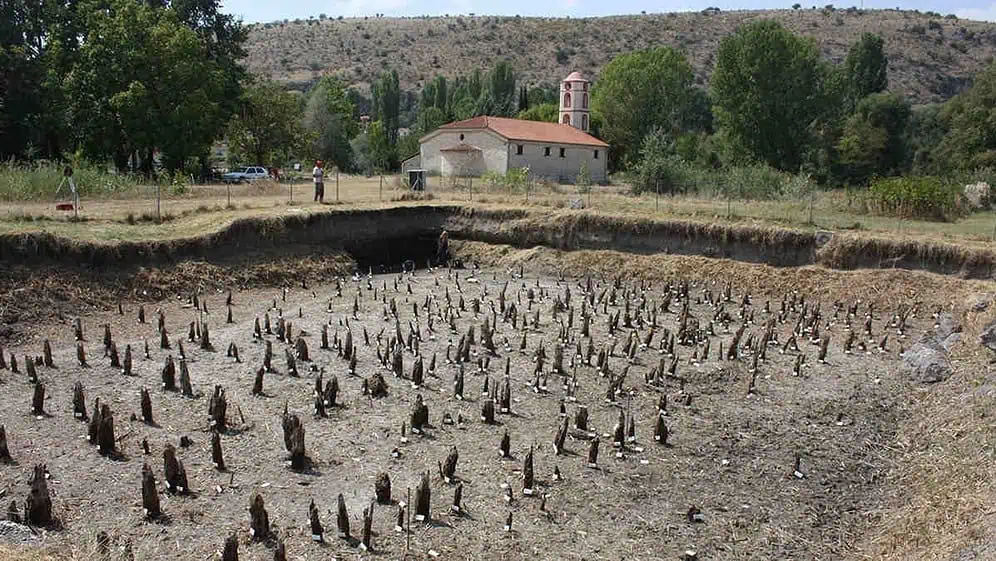Dispilio, Greece – A Landmark in Archaeological Dating
An ancient Neolithic settlement in modern-day Greece has been meticulously dated to the exact years of its existence, thanks to a groundbreaking combination of tree ring analysis and an innovative method derived from cosmic events. This breakthrough provides a crucial reference point for the region and unveils the precise timeline of human habitation at the site.
The Importance of Accurate Dating
Neolithic settlements, dating back to around 10,000 BCE, represent the earliest known permanent human settlements. Accurately dating these sites is essential for understanding the development of human societies, the spread of agriculture, and the emergence of complex social structures.
Traditional dating methods, such as radiocarbon dating, can only provide approximate age ranges, typically within decades or centuries. This imprecision can hinder our ability to establish a clear timeline of events and to understand the relationships between different Neolithic settlements.
The Dispilio Settlement
Located on Lake Orestida in northern Greece, Dispilio is one of the most important Neolithic settlements in southeastern Europe. Excavations have revealed numerous wooden structures, including houses, workshops, and storage facilities. The site has yielded a wealth of artifacts, including pottery, tools, and animal remains.
The Dating Breakthrough
Researchers from the University of Bern employed dendrochronology, the study of tree growth rings, to establish a regional tree ring chronology. However, to attain year-by-year accuracy, they incorporated an out-of-this-world technique: cosmic rays.
Cosmic rays, known for their potential impact on telecommunications, leave unique markers in tree rings during major solar flare events. By harnessing this phenomenon, scientists have identified numerous cosmic-ray markers, including one from 5259 BCE.
Using the cosmic-ray marker from 5259 BCE, researchers meticulously analyzed 787 pieces of timber recovered from Dispilio. This exhaustive analysis yielded a robust 303-year growth ring chronology for the region. Subsequent analysis revealed that the settlement was occupied and dwelling construction occurred over a span of 188 years, specifically between 5328 and 5140 BCE.
Significance
This innovative approach marks a significant step forward in archaeological dating, as it allows for absolute dating of sites without relying on a pre-existing calendar chronology. The Balkans region has become the first to benefit from this paradigm shift, enabling researchers to establish a precise timeline for its ancient past.
The accurate dating of Dispilio provides a crucial reference point for other archaeological sites in southeastern Europe, helping to unravel the interconnectedness and development of Neolithic societies. It also opens up new possibilities for understanding the spread of ideas, technologies, and cultural practices during this formative period of human history.
Conclusion
The precise dating of the Dispilio settlement is a testament to the ingenuity and dedication of archaeological researchers. By combining traditional methods with cutting-edge techniques, they have provided us with a clearer understanding of the origins and development of human civilization. This breakthrough will undoubtedly pave the way for further discoveries and insights into our shared past.


